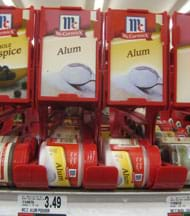Materials List:
Things That Matter to Flocculants
 https://www.teachengineering.org/activities/view/usf_flocculant_activity01
https://www.teachengineering.org/activities/view/usf_flocculant_activity01

Each group needs:
- test water with suspended solids, ~1 liter in a container with a lid
- 7 clear plastic cups
- aluminum sulfate solution, ~3 ml (prepared by teacher)
- polymer flocculant solution, ~3 ml (prepared by teacher)
- 4 plastic spoons or craft sticks, for stirring
- marker, able to mark on the plastic cups
- lemon juice, ~2 ml
- volumetric measuring tool(s), for measuring 1 ml of additives (such as pipettes; clean between use)
- lab journals, or paper and pencil, to record lab notes and observations
- (optional) pH paper
For materials preparation (done by students or prepared by teacher in advance):
- Containers in which to collect "dirty water" from a nearby river or pond; enough to collect ~ 1 liter per group; make sure to scoop up some riverbed silt and dirt during collection
- 2 containers with lids for the aluminum sulfate solution and polymer flocculant solution
- aluminum sulfate (aka alum; purpose: flocculant), a small amount, about the size of a quarter; available at grocery stores in the spice aisle, for example, McCormick's 1.9 oz [53 g] jar for $3.49
- Super Blue concentrated pool water clarifier (purpose: polymer flocculant), a small amount, ~1 ml per 50 ml of water; available at pool supply stores or on the Internet for $13 per quart
- tap water, ~10 ml per student group (purpose: flocculant suspension/dilution)
- tape and marker, to label the containers
 https://www.teachengineering.org/activities/view/usf_flocculant_activity01
https://www.teachengineering.org/activities/view/usf_flocculant_activity01